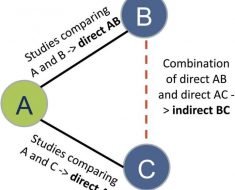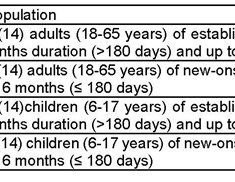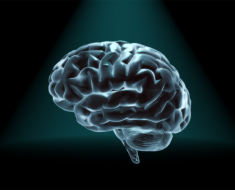Your brain is a fascinating piece of machinery. It has remarkable capacity for development. Very subtle changes in how the brain develops, or in how it responds, can lead to us experiencing the world in vastly different ways. For instance, if I was to ask you “what do words taste like?” you may wonder what I am talking about – but, for some people with synaesthesia, this is a natural way of perceiving the world.
Synaesthesia is a rather rare experience where the senses get merged. This is not the normal sensory interactions that might happen day to day, but unusual merging – words may evoke tastes, for example, or music might evoke perceptions of colour.
There are many different types of synaesthesia, but I’ll consider just one here: mirror-sensory synaesthesia. People with mirror-sensory synaesthesia report experiencing first-hand sensations when viewing touch or pain to others. That is to say that seeing other people’s experiences evokes tactile sensations on their own body. Let’s say they saw someone being touched on the face: they would feel it on their face. These people report literally sharing the sensations of others.
I’ve been studying mirror-sensory synaesthesia for over a decade with my collaborator Jamie Ward. We have also recently worked with the artist Daria Martin, who has made two films about mirror-sensory synaesthesia, which are currently showing at London’s Wellcome Collection. These films explore the world of a mirror-sensory synaesthete based on interviews held between Daria and mirror-sensory synaesthetes that we have worked with.
Mirror-touch and mirror-pain
The first case of mirror-sensory synaesthesia was reported in 2005, and the first group study of mirror-sensory synaesthesia was published in 2007. The experience of feeling touch on their own body when viewing touch to other people is thought to affect around 1.5% of the population.
We now know that there are also other types of mirror-sensory synaesthetes. One related experience is known as mirror-pain synaesthesia, where people report feeling sensations (such as pain) on their own body when viewing pain to others. This appears to affect a much higher amount of people – around 17% of the population. It is also common for people to experience both mirror-touch and mirror-pain synaesthesia.
Although in the lab we focus mainly on the sensory consequences of mirror-touch and mirror-pain synaesthesia, the experience of these types of synaesthesia are often much richer. For instance, some people say that they really appreciate if they see a couple holding hands in the streets or see two people hugging because they say they can almost feel the warmth of the sensation. They report embodying that feeling, as it were.
Some theories
It may be possible for us all to relate to the experiences reported by mirror-sensory synaesthetes to some degree. Say you saw a spider crawling across someone’s hand – you might want to pull your hand away.
It is true to say that if we look in the brains of mirror-sensory synaesthetes, they recruit a similar brain network that we all use. When we see somebody else experiencing a state, we tend to activate similar areas of the brain that are involved in the first-hand experience of that state. This is a skill known as vicarious perception. What appears to be happening in mirror-sensory synaesthesia is that this mechanism is overactive. In this way, mirror-sensory synaesthesia has been construed as an extreme end-point of a continuum – a sliding scale of the intensity in which we share the states of others.
But the question of whether mirror-sensory synaesthesia is a continuum is a subject of debate. The reason for this is that mirror-sensory synaesthetes show broader differences in how they represent other people even when observed touch or pain is absent. That is to say that their judgements about their own body (such as its movement or position) are more strongly influenced by the presence of other people even in the absence of viewing touch or pain. This can be interpreted as a greater tendency to blur the boundaries between the self and other – altered self-other representation.
Source: Read Full Article





